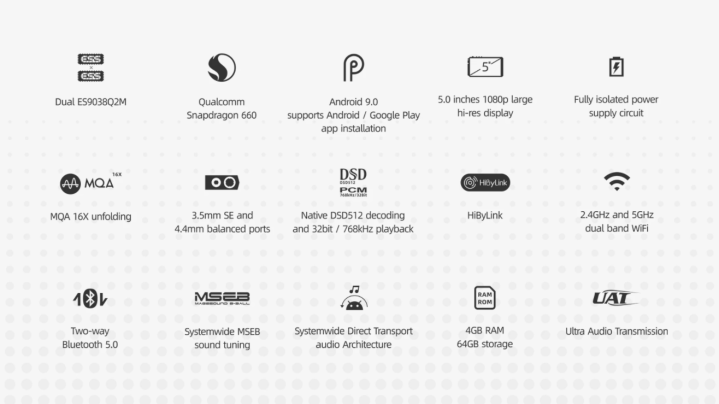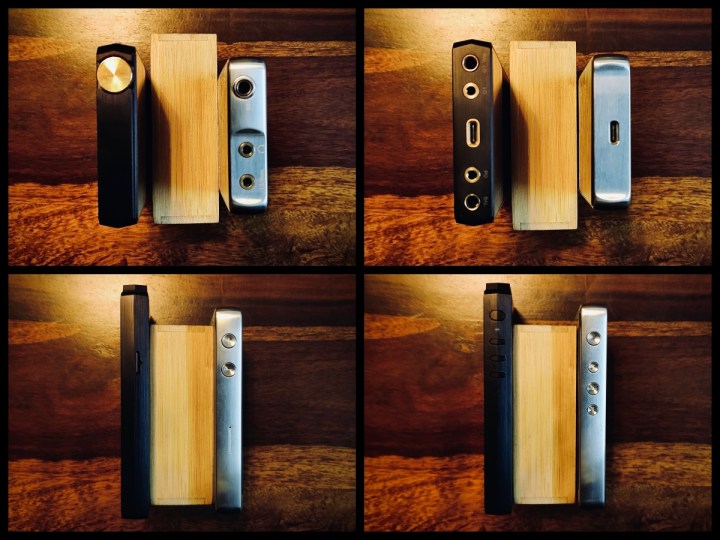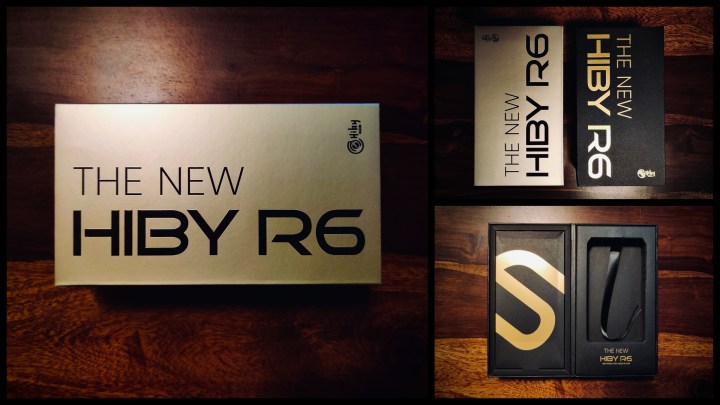R6 2020? More like a V6 with twin turbo!
PROS: Excellent VFM, classy design, build quality, one of the fastest DAPs as per AnTuTu Benchmark test, good usage of premium tech inside, very nice smooth HiBy OS experience, high quality rich and musical sound signature, good power output from both SE and BAL, very low noise floor, independent isolated power supplies, USB3.1 and QC3.0 support.
CONS: Nitpicking – Rotary encoder of my unit occasionally hangs for a tiny bit before resuming action. Pop noise when changing MQA tracks in TIDAL. Wish – HiBy should include their 10-band EQ in system Audio settings too like they did MSEB.
Disclaimer.
I would like to thank HiBy for sending me R6 2020 to test and review. I am not affiliated with the company or any of its sellers and write this review with an unbiased opinion regardless of how the review turns out.
About HiBy.
Established in 2011 and based out of China, HiBy has extensive history of R&D, developing software and UI for other manufacturers, their own music player HiBy Music (which is a killer music player capable of doing things the average Android player can’t) and are now a major player in the hardware world too with a big vast DAP lineup as well as earphones, IEMs, TWS, Bluetooth DAC/AMPs, etc.
Links – HiBy R6 2020 ($799) | HiBy R6 2020 Leather Case ($39)

Included in the box.
- HiBy R6 2020
- USB Type-C Cable
- USB Type-C to Coax digital cable
- Protective screen guards
- Manuals
Technology Inside.

Picture courtesy – HiBy
Quick Summary – HiBy R6 2020 has dual ES9038Q2M, Snapdragon 660 SoC, 5.0” 1080P 443 PPI large Hi-Res display, Android 9, MQA 16x unfolding, DSD512, 4GB RAM + 64GB storage with microSD card slot that is expandable to 2TB, QC3.0 charging and USB 3.1 support.
– Snapdragon 660 SoC – It has class-leading 8-core Kryo 260 architecture, 4nm LPP process, speeds up to 2.2GHz and Adreno 512 GPU.
– Japanese Alps Rotary Encoder for volume adjustment.
– Dual ES9038Q2M – It has native support for DSD512, PCM32bit / 768kHz with both DACs in operation for both SE and balanced output. It utilises current-mode output for even better noise rejection and cleanest background.
– Dual crystal oscillators – High-accuracy, low-phase-noise crystal oscillators dedicated to 45.1584 and 49.152MHz for flawless low-jitter performance for music at any sample rate.
– All new power supply circuit design – Line and amplification stages are driven by two independent isolated power supplies for cleaner and more powerful dynamics.

Picture courtesy – HiBy
– Audio circuit design – OPA 1612 as the line stages coupled with low-ESR Panasonic POSCAPs and pro-audio grade Elna caps.

Picture courtesy – HiBy
– Multiple audio outputs – Both 3.5mm SE and 4.4mm Balanced ports can act both as line out and headphone outputs.
– HiBy OS updated to Android 9 – HiBy OS is HiBy’s in-house developed rebuild of the Android system architecture optimised for bit-perfect audio unlike stock Android. Now updated to Android 9, supports the R6 in all desired audio I/O roles such as USB audio in / out, Bluetooth audio in / out simultaneously for unlimited flexibility.
– Full support for most Hi-Res formats including HD Bluetooth Formats – HiBy R6 2020 supports most Hi-Res lossless formats such as FLAC, WMA, WAV, Apple, LOSSLESS, DSF and DSDIFF along with native support for DSD512 and PCM 32bit / 768kHz playback. R6 2020 supports two-way Bluetooth. Bluetooth input – SBC, AAC, LDAC, UAT. Bluetooth output – SBC, AAC, aptX, aptX HD, LDAC, UAT.
– MQA 16x – R6 2020 offers MQA 16x unfolding capability whereas some much more expensive DAPs can only do upto 8x.
– Wireless Support – R6 2020 supports DLNA and AirPlay remote playback and music file transfer via WiFi but you need to install a third-party Airplay receiver app that can receive Airplay from Apple devices.
Hardware Testing.
AnTuTu Benchmark – R6 2020 scored BIG in AnTuTu Benchmark test with a score of 212042, which makes it one of the fastest DAPs in the market and definitely the fastest DAP at its price point. For your reference, both R6 2020 and R6 Pro were tested with v9.0.4-OB.

Battery Life (4500 mAh) – HiBy claims 10 hours of battery life with SE and 8.5 hours with balanced under test conditions. In my tests, I came close to their claim, averaging 9-9.5 hours with SE and 7.5-8.2 hours with balanced using my MP3 320 kbps playlist and a bit of screen time in between.
Qualcomm Quick Charge QC3.0 Support – R6 Pro supports QC3.0 charge. It generally took me 2 hours to charge R6 2020 from 15% to 100% with a QC3.0 charger.
Design and Build Quality.
I’ve generally found HiBy’s designs very attractive and classy. R6 2020 now takes the R6 Pro design to another level. It’s looks like a baby R8 to be honest. Compared to its predecessor, it’s now sharper with bold straight lines, weighs lighter and looks even more premium. It comes in two colour options, Black and Silver. Both have a nice brushed aluminium alloy body which I absolutely dig. The edges are bevelled and feel nice and smooth while holding the DAP. The 5.0″ screen is not bezel-less like how recent smartphones have gotten, yet fills up almost 95% of the space with a very small bezel at the bottom which hosts the ‘HIBY’ logo. It is covered by Corning Gorilla Glass on both sides, which is a great add-on for clumsy people and gives the R6 2020 a cool glossy look at the back too.
- On the top is the Rotary Encoder for volume adjustment.
- At the bottom are the outputs and charging port in the order below,
4.4mm BAL LO | 3.5mm LO | USB Type-C charging port | 3.5mm PO | 4.4mm BAL PO - On the right are buttons for Power, an LED indicator and buttons for Previous, Play and Next.
- On the left we have a micro-SD card slot.
The LED light indicator –
- Blue – 48kHz and under
- Green – 64k-192kHz
- Orange – Over 192kHz
- White – DSD files
- Red – Charging (faster blinks with quick charging, slower with normal charging)
User Experience – I’ve always felt that DAPs were a bit behind current generation smartphones in terms of speed and large attractive high resolution screens but not anymore! Even though the primary objective of DAPs existing is high quality sound, which is where most of the money goes into manufacturing the device but with R6 2020’s AnTuTu score and that 5.0” 1080P 443 PPI hi-res display, it just shows that manufacturers have been listening and trying their best to put in those nice smartphone bling in there too.
R6 2020 is a significant upgrade over its predecessor R6 Pro as it is 3 times as fast, which just blows my mind! R6 2020 is the fastest DAP in the market at its price point as far as I know and the OS is extremely smooth, fast and a joy to use. It is fairly light and has a very good form factor which makes it a DAP I don’t mind using on the go all the time, where my cool blingy Oneplus 7 Pro takes a back seat and becomes a phone that I just use for calls.
R6 2020 doesn’t have a card tray for the SD card and instead uses the push in and lock style mechanism. All buttons are ergonomically placed, have a minor triangular head and feel very nice to use. The rotary encoder on top is gold in colour and adds on to R6 2020’s classy look. The encoder is fairly easy to reach and use. It works seamlessly most of the times but sometimes becomes unresponsive for a few seconds until you tap your finger on the screen to adjust the volume manually from the touchscreen. It starts behaving normally right after but it’s a downer at times when you accidentally click on the top part of the screen to adjust the volume when it has hung and end up boosting the volume and blasting your ears like crazy. But well, I’m quite careful about it now having blasted my ears several times. Jokes apart, I do prefer older R6 Pro’s buttons for volume adjustment over the rotary encoder but I guess that’s a personal preference and I haven’t come across anyone else having this problem. So, it just could be my unit.
Here’s a comparison view of R6 2020 and R6 Pro side by side.

Some cool features of HiBy Music player.
Import music via Wifi – If you have a Mac, you know what a pain in the *** transferring files using Android File Transfer (AFT) can be. That is why I love this feature! You simple need to enter the URL mentioned by HiBy on this page in your laptop’s browser which loads a page where you can create folders and transfer the files to those folders on the DAP. It is fast and saves the hassle of connecting the R6 2020 to the laptop every time you want to transfer a new album from your laptop.

MSEB – Whoever has tried the HiBy Music player has probably come across the MSEB EQ and knows how cool an EQ it is. It has layman terms as the options to tweak, which takes the guess work in a graphic equaliser away.

10-Band Graphic Equalizer – Nothing out of the ordinary here but I’d like to mention that being an audio engineer, I use such EQs on a daily basis and HiBy’s EQ works and reacts to gain increments and decrements very well. It’s a very musical sounding EQ!

HiBy Link – Here is how HiBy describes this feature and it is quite self-explanatory.
Control and manage your music files wirelessly with your mobile phone. With the HiBy Link, you can also play the Hi-Res music stored on the R6 wirelessly right on your smartphone.
I linked it to my OnePlus 7 Pro with 7 Pro acting as the controller. It’s very cool!
Page 2 – Sound Analysis, Pair-ups, Comparisons and Conclusion.



been eying for new dap, this new r6 2020 is one in my list, but i want to ask for your preference between new r6 2020 and cayin n6ii witch one you take? regardless the $400 price difference.
like u said, since this r6 2020 is newer & carrying a new upgrades inside from ram, rom & android version, but from some that i asked it’s funny they all prefer to n6ii for musics experience.
whatever techs upgrade that daps carrying they all back to how the sound produced can amuse the owner.
thanks. ..
LikeLike
It’s a personal preference and choice to be honest. I’ve tried the Cayin N5iis properly and preferred R6 2020 as well as R6 Pro’s sound over it. Haven’t had the chance to test and compare the N6ii since I got the R6 2020. Alex has both of them (including all the dac/amp modules of N6ii) and will be able to answer better. As for my suggestion, if you want the dac/amp module changing capability of Cayin N6ii, you should definitely consider the extra $400 but if you have a strict budget, R6 2020 at $800 by itself is a fantastic DAP which not only sounds great but is also very fast and lovely to use because of the HiBy OS, the nice 1080p screen and speed.
LikeLike
How does it sound compared to the Hiby R8. Is is complementary or similar? I am thinking it could be a good device for taking on vacation if it is significantly smaller than the R8.
LikeLike
I don’t have the R8. Alex has the R8 and R6 2020 too and will soon be publishing his article with comparisons between R8 and R6 2020. In the meantime, here is his post on Head-fi thread comparing R8 vs R6 2020 side by side – https://www.head-fi.org/threads/hiby-r6-2020-user-impressions.945843/post-16031047
LikeLike
Hi! is the hiss on the andromeda tested on the 4.4mm or the 3.5mm outputs?
LikeLike
3.5mm in case of Andromeda. Hissing in Andromeda is slightly more noticeable with 4.4mm BAL without any music playing but I personally don’t use hyper-sensitive IEMs like Andromeda with a high-power balanced output since 3.5mm SE generally has more than sufficient power for them. 🙂
LikeLike
While the use cases are pretty different, I’d love to hear your (or Alex’s) take on the SQ difference between this and the L&P W2! (maybe that’ll be more appropriate for the dongle review, whenever that comes out.) Cheers and thanks for the great review!
LikeLike
Thank you. I personally don’t have the L&P W2 but we shall if we review it. Cheers!
LikeLike
Thanks for insightful review.
A few questions pls…
1. Does it support external hdd via OTG?
2. Can you confirm that it can play dsd512 natively?
Appreciate your inputs. Thanks
LikeLike
Yes, it should support external storage via OTG, but you have to be careful because some external HDDs draw too much current and required to be connected to USB3 compatible port with 900mA supply of current. That might be too much for the DAP or a smartphone. And, according to Hiby spec, it does support DSD512 natively; I personally don’t have any DSD512 files to test.
LikeLike